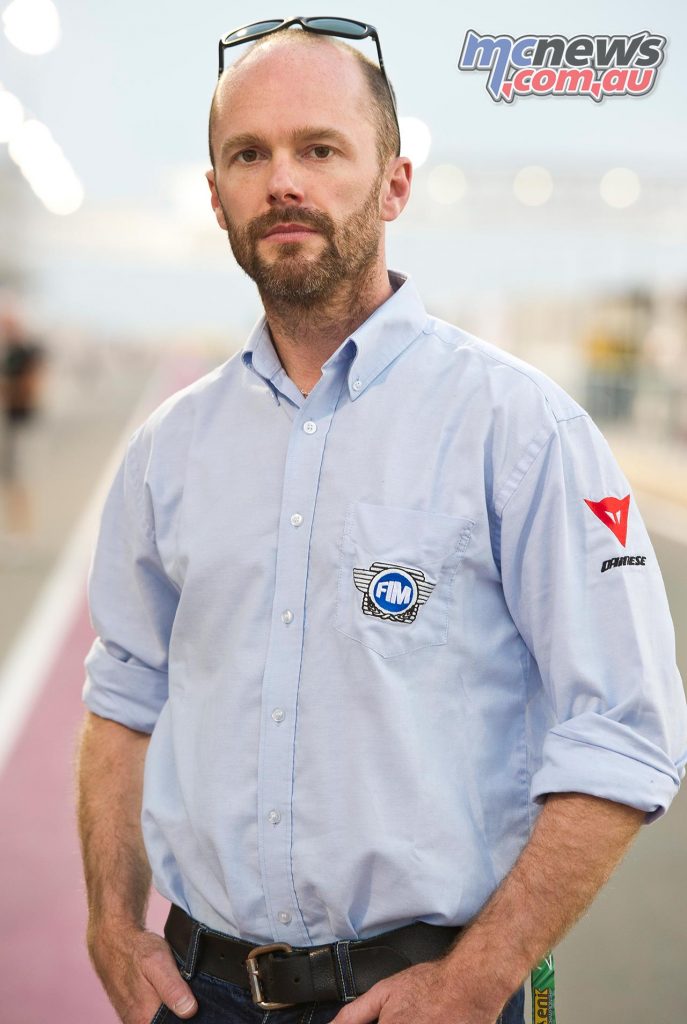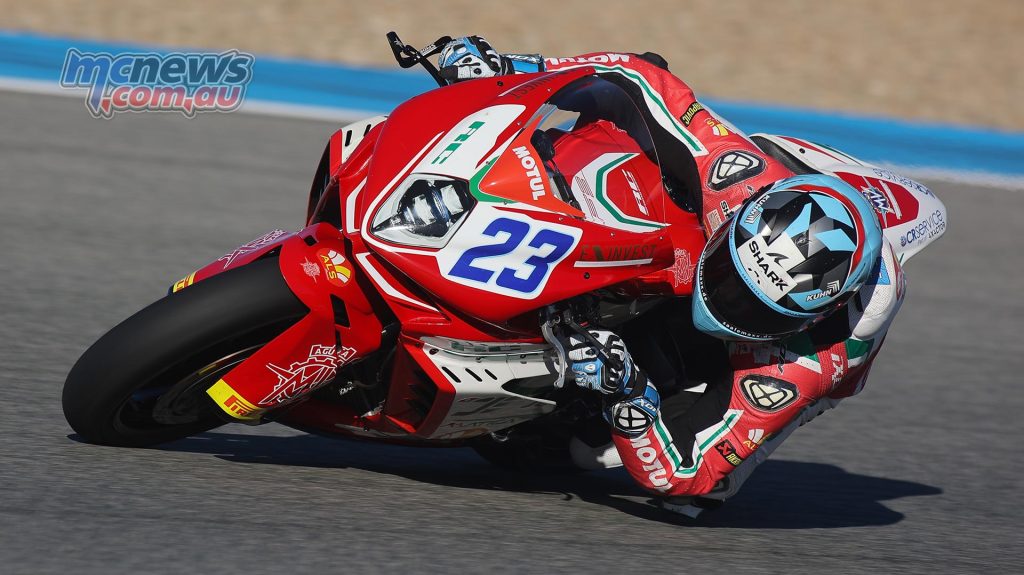Motorcycle Road Racing
Future Directions – Part One
Scott Smart was born into a family of motorcycling royalty and went on to achieve some success in road racing himself while also obtaining a degree in physics. Eventually, via a few other diversions, that led to Scott being appointed Technical Director of World Superbike in 2014, and Scott is also the creator of the Next Generation Supersport category that debuted in the 2022 World Supersport season.
The category format was initially debuted in 2021 by BSB, followed by WSS, Moto America and then the Italian Championship in 2022. It is now the predominant Supersport rules package in many competitions around the world.
Recently, ASBK also announced their first baby progress steps towards taking Australian Supersport down the same Next Gen direction.
These days, Scott is the Director of Technology for Dorna, working on Dorna’s vision of future regulations and the BSB Technical Director. He works very closely with several Championships, such as MotoAmerica, IDM and CIV.
I have had quite a few chats with the 49-year-old in recent years, mainly over dinner or lunch at my place when he is visiting Australia, but I had never got around to an actual sit-down interview-style conversation that I could relate to our readers. Recently, we decided to fix that state of affairs…

Trev – Would you describe your baby, Next Generation Supersport [NG], as a success?
Scott Smart – “I think that has to be a yes, both in terms of feedback and in terms of teams signing up to race in NG. We now have Supersport fields of over 50 bikes in BSB, and high 40s in MotoAmerica, and it’s the same story everywhere.
“There are a wide variety of bikes that can be raced. Hopefully, a brand appealing to everyone’s passions. We manage things to keep the balance correct so there is no one dominant machine, so pick any of them to race!
“As you have clearly seen in past, especially in any Superstock based classes, there has often only been one brand to be on. Hence the name, the Next Generation, although I am not a Star Trek fan per se.”

Trev – Do you think it has decreased costs at WorldSSP and BSB Supersport competition? Or was this not a principal consideration in the gestation of the format, and the move to include more manufacturers was the primary goal behind the design?
Scott – “It has undoubtedly led to a cost reduction in both bike build AND direct bike based running costs.
“The changes I had made before this in WSBK were very much aimed at cost control and that was a primary consideration in NG.
“In Superbike, it was achieved by removing engine and electronics development from small teams, allowing them to get a copy of the factory equipment. They also then have more centralised support for electronics etc, reducing staff numbers, which is a huge cost saving.

“In NG, including many more manufacturers also creates a position where there is more potential support – more manufacturers, more dealer teams, more importers, more marketing budgets.
“Triumph and MV Agusta worked hard with me, as they didn’t even have bikes in production anymore that fitted the old regulations, and we knew that other manufacturers would be in the same position in a few years – even if those manufacturers did initially fight it, but now are also NG. If KTM hadn’t glitched, we would have another manufacturer already in the field this season.

“The initial balance level we aimed for was always ‘good R6’ as during the crossover seasons, we didn’t want ‘conventional’ Supersport teams needing to reinvest hugely.
“We can break it down later, but the cost to build the bike is less than Supersport – with fixed engine kits (where needed) developed by the manufacturer and controlled costs on suspension, brakes, and electronics systems.
“The key point missed by everyone is the total cost. The machinery cost is only a small part – fuel/tyres/transport/logistics/hotels/licenses form a far higher cost than the bike, especially considering that it can then be amortised across a few seasons.
“This cost differential increases as you move up the categories, even though the bikes get more expensive. A WSBK team can have machinery at around 15 per cent of annual cost, but for a national Supersport team, it will be higher if considered on a single-year basis. The cost across a few seasons of racing is where the machinery costs are hugely reduced.
“The engines have been incredibly reliable and do huge mileage between refreshes with no development costs. Even a standard Yamaha R6 needs a refresh every now and then – you should go and price a set of valves, valve springs, rings, shells etc, plus the build…. In many cases the base bike is now cheaper than the bikes of the past.
“Now, you can concentrate on riding and settings rather than development.
“Remember, this is compared to Supersport bikes, ASBK races at the Superstock level, which have less engine work; however, observing in the ASBK paddock the WSBK level shocks ($14K AUD) in some Australian Supersport bikes, along with carbon, etc, it is interesting that people then talk about cost concerns…. Next Generation rules has price caps on Clamps/Links/Fork Kits/Shocks/master-cylinders and certainly no WSBK level suspension components that I see on the Australian Supersport grid now.”

Trev – How challenging has it been with the pushback by the various brands wanting more torque back or other technical changes to advantage their motorcycles? What did you find was the best way to manage that, not technically, but politically? Is that still under your remit or does someone else have final say over the performance balancing equations these days?
Scott – “The pushback was huge – it’s the manufacturer’s position to get any advantage that they can, and it was mine to keep it level.
“Dorna invested hugely in software and modelling to help us make the first setting and also to help see the effect on lap-times as we adjust the BOP limitations.
“The model includes details as small as how the rider shifts and tyre pressure. You can spend a LOT of time with it…
“I was no longer with FIM from 2023, and the manufacturers definitely pushed to get more (it’s hard to say no), and it took until mid-season ’24 to get the balance back.
“BSB, MotoAmerica and a couple of other series have a subtly different BOP. We don’t allow some extra parts on the Ducati that were allowed after my departure, and now we are also more restrictive with some other special parts. The slightly lower level has allowed Honda to be more relatively competitive.”

Stay tuned for Part Two of the interview shortly!










